Microorganisms
- Books Name
- Class-8 Science Book
- Publication
- PathSet Publications
- Course
- CBSE Class 8
- Subject
- Science
Microorganisms
What are Microbes?
Microbes or microorganisms are tiny organisms that are so small that we cannot see them with an unaided eye. Some microorganisms can be seen with the help of a magnifying glass (such as the fungus that grows on bread) while some can only be seen when you use a microscope (such as bacteria and protozoa). Microorganism were first observed by Anton Van Leeuwenhoek.Viral, Bacterial, and Protozoan Diseases
A microorganism or microbe is a microscopic organism that may exist in its single-celled or colony of cells.
Nature and occurrence: -
- Life on earth depends on microorganisms. They play a very critical role in the ecosystem of our planet. Microbes perform the important role of breaking down dead organisms into the basic nutrients that are essential for life on our planet.
- Bacteria, fungi, algae, and protozoa are the 4 major groups of microbes.
- Viruses are another class of microbes that totally depend on the host for food, growth and reproduction. They are incapable of independent existence.
- Nature: Microbes may be unicellular e.g. bacteria, protozoa, or multicellular (2 or more cells) e.g. some Algae and Fungi.
Features of Micro-organisms
- Microorganisms are too small and are not visible to the naked eye.
- They can live in all kinds of environments, ranging from ice cold climates to hot springs, deserts and marshy lands.
- Microorganisms are found in air, water and in the bodies of plants and animals.
- They may be unicellular or multicellular.
- Microorganisms include bacteria, fungi, protozoa and some algae. Viruses though different from the above-mentioned living organisms are referred to as microbes.
- Viruses are quite different from other microorganisms. They reproduce only inside the cells of the host organism: bacterium, plant, or animal.
There are four major types of microorganisms:
Bacteria: These are single-celled organisms with a rigid cell wall. They can only be seen under a microscope which enlarges images from 100 to 1000 times.
Types of Bacteria (based on their Shapes) and their Examples
- Fungi: These are non-green plants and hence, cannot make their own food. They either live as parasites (deriving nutrition from host organisms, for example, Puccinia which causes wheat leaf rust), or grow on the organic matter (such as bread mould).
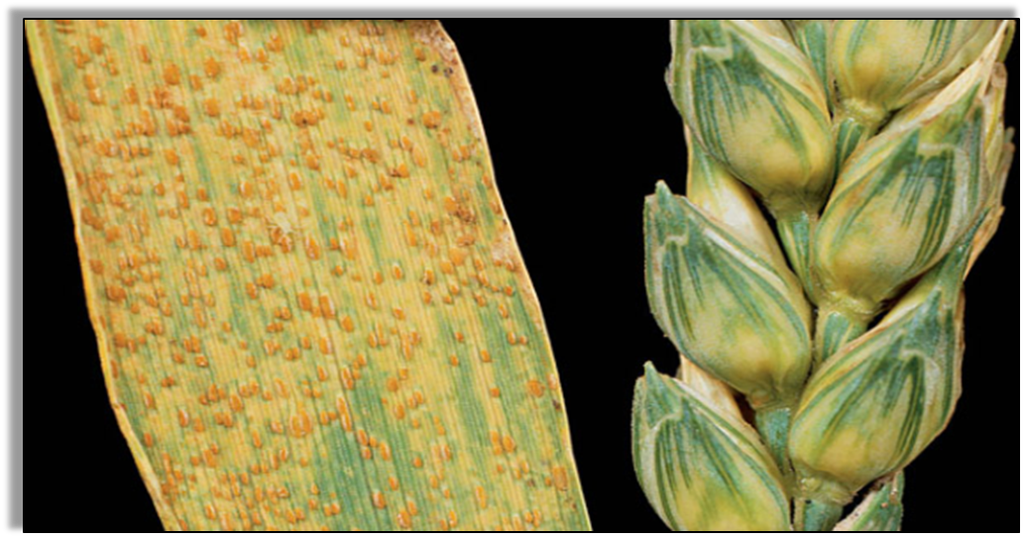
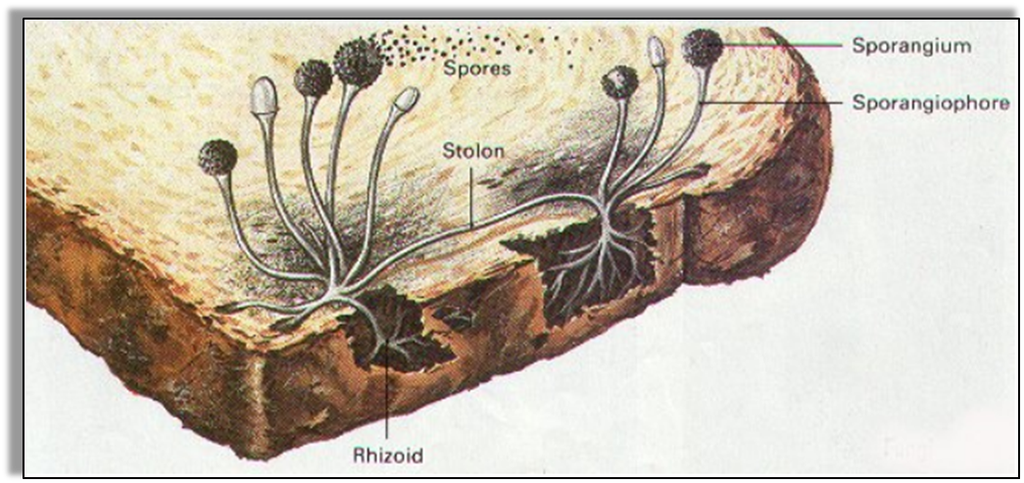
- Fungi, like mushrooms, moulds, mildews, and years, are eukaryotic. It means that they have a true nucleus.
- The main components of fungi are:
- i. Hyphae: They are thread-like filaments that penetrate into substrates, secrete enzymes to break down nutrients into smaller molecules, and absorb them.
- ii. Spores are a unit of sexual or asexual reproduction. They can adapt for dispersal and survival for extended periods of time in unfavorable conditions.
- Algae: These are simple plant-like organisms that are usually aquatic in nature. They contain a cell wall and chlorophyll and can make their own food by photosynthesis. Algae can be unicellular or multicellular. Some of the common examples are diatoms, Chlamydomonas, and seaweed.
- Protozoa: Protozoa are unicellular organisms. Some of them live independently while others live as parasites. Many of the parasitic protozoans cause diseases in plants, domestic animals, and human beings. Example of some protozoans are Amoeba, Plasmodium and Paramecium
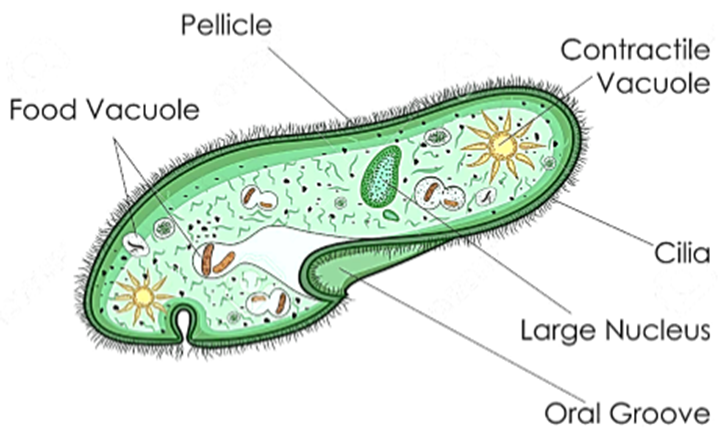
How are Viruses different from other microbes?
- Viruses are microscopic organisms but they are different from other microbes because they reproduce only inside the cells of the host organism (which can be a plant, animal, or a bacterium).
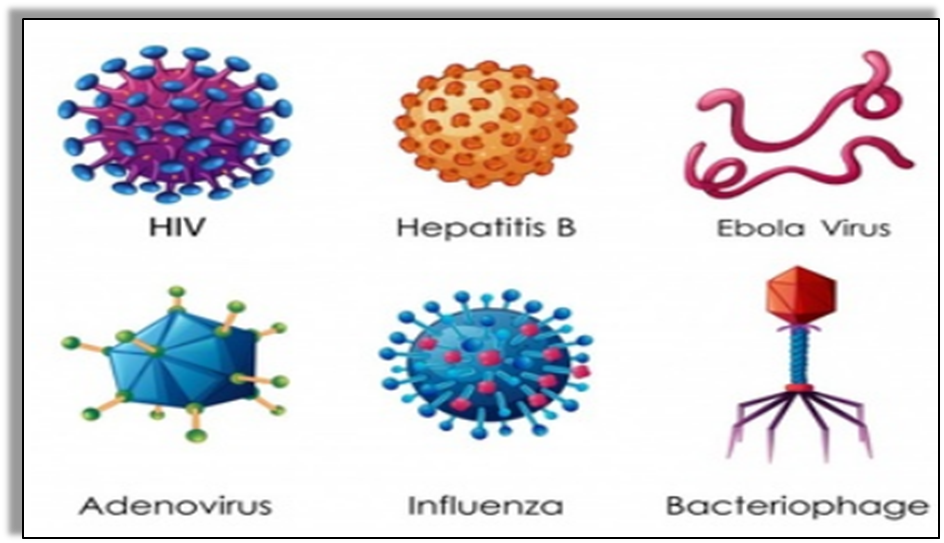
- Viruses are much smaller than bacteria and come in a wide variety of shapes and sizes. A complete virus particle is known as Virion.
The virion consists of a nucleic acid surrounded by a 'capsid'. The capsid is a protective coat made of protein. The subunits of this protein are called 'Capsomeres'. Viruses can be seen only by an electron microscope as they are ultramicroscopic in size. - Outside the body of a living organism, they do not show any reaction and hence, can be crystallized and stored like non-living things.
Where do Microorganisms Live?
- Books Name
- Class-8 Science Book
- Publication
- PathSet Publications
- Course
- CBSE Class 8
- Subject
- Science
Where do Microorganisms Live?
Microbes can survive in all kinds of environments – from icy cold climates to hot springs (any kind of temperature); and deserts to marshy lands (any humidity level). Some live independently while others live as parasites – inside the bodies of other organisms (including animals and human beings).
Habitat: Microbes can be found in all types of habitats. They can withstand all extremes of
climate, e.g. ice-cold regions, hot springs, deserts, or marshy regions.
Occurrence: They may be free-living (capable of independent existence) e.g., amoeba or they may be seen in colonies e.g. fungi. They may also be parasitic and found on or inside the host organism.
Microorganisms and Us
- Books Name
- Class-8 Science Book
- Publication
- PathSet Publications
- Course
- CBSE Class 8
- Subject
- Science
Microbes in Food Industry: -
Bacteria:
▪ Lactobacillus – converts milk to curd.
▪ Acetobacter (acetic acid bacteria) – produce acetic acid. A dilute solution of acetic acid (vinegar) is used as a preservative.
Fungi:
▪ Yeast – baking of bread and cakes.
▪ The action of yeast: It acts on sugar to release carbon dioxide. This CO₂ rises through the dough making it soft, spongy and also increasing the volume.
Microbes are used in the large-scale production of acetic acid, wine, alcohol, and cheese. Sugarcane juice, sugar beet, grains like barley, wheat, and rice contain sugar. When yeast cells act on these sugars, alcohol and carbon dioxide are produced. This is called fermentation.
Yeast + sugar → alcohol + carbon dioxide
Microbes in Medicine: -
▪ Antibiotics are made from bacteria and fungi.
▪ The first antibiotic was Penicillin discovered by Sir Alexander Fleming.
▪ Streptomycin, Tetracycline, Ampicillin and erythromycin are other commonly used antibiotics.
▪ Different bacteria and fungi produce different classes of antibiotics.
▪ Antibiotics are also beneficial to animals and plants. They may be sprayed on fields to prevent infections in plants or mixed with the food to protect livestock or poultry.
Production of Vaccine: -
▪ WBCs present in our blood produce antibodies to fight against disease-causing microbes or antigens.
▪ Each antibody can fight only a specific antigen. The specialty is that once an antibody is produced against an antigen, it can be produced instantly at the time of another invasion by the same antigen.
▪ The substance which is used to stimulate the production of antibodies and provide immunity to fight against several disease-causing agents is called VACCINE.
Some microorganisms are beneficial to us while others are harmful and cause diseases.
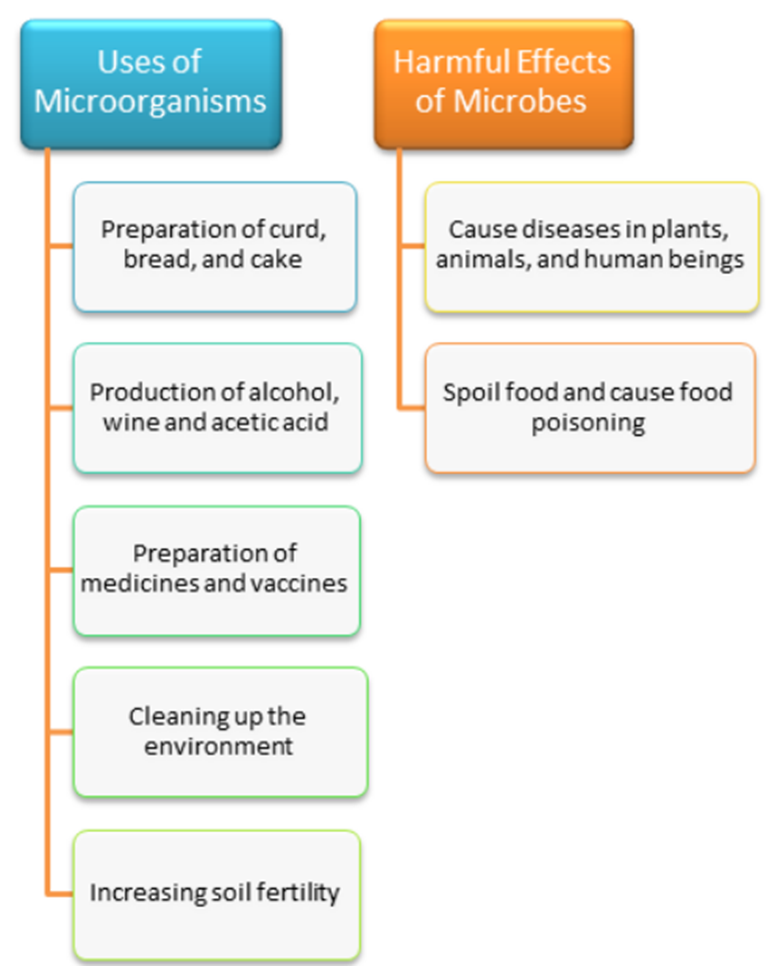
How are bacteria useful to us?
The term ‘microorganisms’ includes bacteria, fungi, viruses, and protozoa. We almost always presume they are harmful to us. So this is because we read about how they cause diseases to both plants and animals including humans. But, it is a fact that microorganisms are useful to us in many ways. Microorganisms help in the production of many food items, making medicines, keeping the environment clean, manufacturing and research. Let us learn about microorganisms and their uses.
Microorganisms and their uses
1. Production of Dairy Products:
Bacteria are the key players here. Bacteria help in fermentation which helps in making different forms of dairy products from milk like curd, buttermilk, butter, cheese. Streptococcus is the most common genus of bacteria that are used in the commercial production of this product. Learn more about Disease-Causing Microorganisms here in detail.
2. Bread Baking:
A species of Streptococcus is added to the dough before making bread to bring about the required fermentation.
3. Alcoholic Drinks:
Alcoholic drinks are prepared or manufactured by the process of fermentation. Each drink is derived from a different starting product such as potato and grapes. Then it is fermented, distilled and alcohol is prepared. The commonly used microorganism here is different types of fungus-like yeast. Some even use bacteria and fungus. Alcoholic drinks include wine, rum, vodka etc.
4. Organic acids:
Organic acids are commercially prepared using fungi. Acetobacter, Rhizopus, Penicillium are a few fungi that are used to ferment substrates such as fruits and sugar-containing syrups. Examples of acids that are derived and manufactured on a large scale using fungi are acetic acid, citric acid, gluconic acid, fumaric acid and lactic acid.
5. Enzymes:
Many microbes are used in the derivation of enzymes such as lipase, lactase, protease, peptidase to name a few.
6. Steroid production:
Some bacterial and fungal species are used in the preparation of steroids that are then injected into the human body for different purposes.
7. Help in sewage treatment:
Not only are microorganisms helpful to our body, but they are also helpful to the environment. They help in the secondary treatment stage of sewage treatment.
8. Used as insecticides:
Certain bacterial and fungal species are used to keep certain insects and pests away from crops.
9. Fertility of soil:
Microorganisms play a very important role in maintaining the fertility of the soil. They help in the composting process which forms manure. Also, microorganisms present in the soil help aerate it and enrich the soil with nitrates and other nutrients. These nutrients are needed by the crops for an abundant harvest.
10. Production of vitamins:
An essential vitamin that people need for proper digestion is Vitamin B 12. Fungi are responsible for manufacturing B12.
11. Production of antibiotics and antivirals:
Bacteria and viruses are isolated and their antigens and enzymes are extracted. These antigens help in the development of antibiotics and antivirals.
12. Biotechnology and Research:
So many labs use bacteria, fungi and especially viruses for research studies. Non-virulent forms of these microorganisms are injected into subjects going through clinical trials. This in the future helps in the development of medicines, vaccinations and cures for diseases. And DNA and RNA studies also make use of them. It is important for us to know about microorganisms and their uses as they are both beneficial as well as harmful to other life forms. They play a crucial role in the ecosystem. Maintaining a balance between the ‘good’ and ‘bad’ microorganisms is the key to coexisting with them.
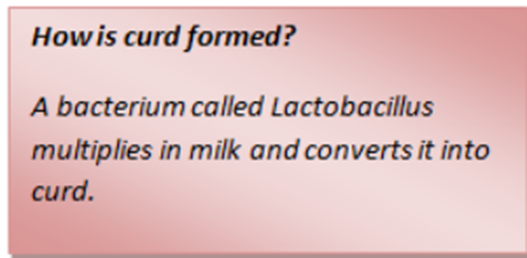
Bacteria are helpful because:
- It decomposes organic wastes (such as vegetable peels, animal remains, feces etc.).
- It is used in the preparation of medicines.
- It increases soil fertility by fixing nitrogen.
- It is used in the setting of curd and making cheese, pickles, and other food items.
How is yeast useful to us?
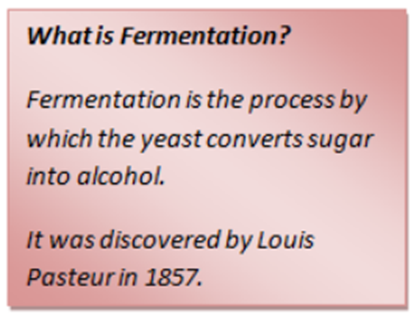
Yeast is used in the baking industry (to make bread, pastries, and cakes) because it helps in fermentation. It reproduces rapidly and produces carbon dioxide during respiration. Bubbles of the carbon-dioxide gas it produces fill the spaces in the dough and increase its volume.
It is also used in the commercial production of alcohol and wine which is done by growing yeast on natural sugars present in fruit juices and grains like rice, wheat, and barley.
Antibiotics
What are Antibiotics? What are their uses?
Antibiotics are medicines that can kill or stop the growth of disease-causing microorganisms.
For Example, Penicillin.

Antibiotics are used to:
- Cure a variety of diseases (such as streptomycin, erythromycin, and tetracycline that are made from bacteria and fungi),
- Cure microbial infection in animals (by mixing antibiotics with the feed of livestock and poultry), and
- Control several plant diseases.
What precautions should be followed while taking antibiotics and why?
Antibiotics should be taken only on the advice of the doctor, and one must complete the course the doctor prescribes. Antibiotics taken in wrong doses may make the body resistant to the drug and it may not be effective in the future. Moreover, antibiotics may also kill the beneficial bacteria in the body.
Please Note: Antibiotics cannot cure colds and flu caused by viruses.
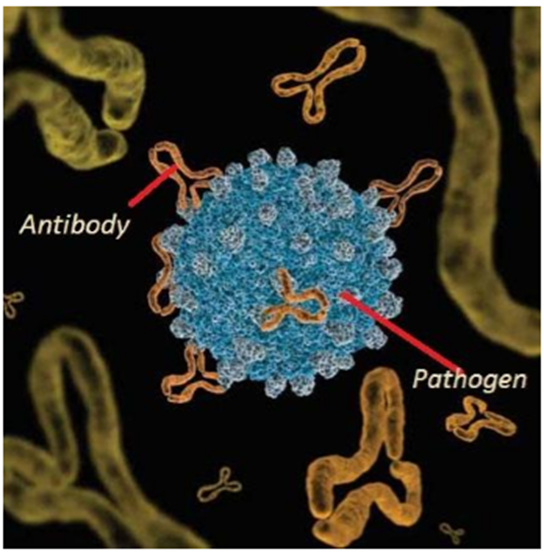
Some Definitions to Remember:
Pathogens: Disease-causing microbes are called Pathogens.
Antibodies: Antibodies are substances our body produces to fight disease-causing microbes.
Vaccines: Vaccines are weakened or dead disease-causing microbes that are injected into our body to trigger the production of antibodies. These antibodies remain in the body for a long time to protect it against any attack of disease-causing microbes.
Vaccination: The process of protecting the body from pathogens with the help of vaccines is called Vaccination.
Name some of the diseases which can be prevented by vaccines
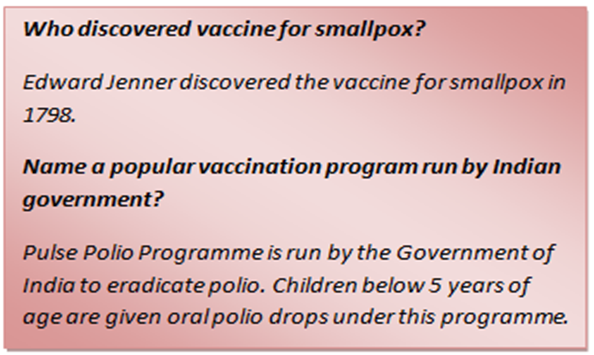
Some of the diseases that can be prevented by vaccination are:
- Cholera,
- Hepatitis,
- Smallpox, and
- Tuberculosis.
One can get necessary vaccines from nearby hospitals.
How do microbes clean up the environment?
Microbes or microorganisms decompose organic waste and dead remains of plants and animals and convert them into simpler substances (which can again be used by other plants and animals) by the process of biodegradation. Thus, they help us in getting rid of harmful and smelly substances and clean up the environment.
Harmful Microorganisms
- Books Name
- Class-8 Science Book
- Publication
- PathSet Publications
- Course
- CBSE Class 8
- Subject
- Science
Harmful Microorganisms: -
When a child suffers from a common cold or cough he/she is asked by the school to stay at home. The reason for this is to prevent other children from being exposed to harmful, infectious and contagious microbes.
Disease-causing Microbes: -
The disease-causing microbes are known as pathogens. Microbes can spread through the air, water, soil, or from an infected person to a healthy person. Thus the diseases caused by them are called communicable diseases.
Some microbes, their spreading source and the disease caused:-
Bacteria:
Source: - Disease caused: - Food, water Cholera Water Typhoid Infectious food material Anthrax Air Citrus canker (in plants).
Virus:
Source:- Disease caused:- Air Common cold, measles Water Hepatitis A, polio Contact Chickenpox Intimate contact/blood transfusion AIDS (caused by HIV) Infected food matter Foot and mouth disease (cattle).
Insect vector TMV, yellow vein mosaic (plants)
Protozoa: -
Source: - Disease caused: - Insect vector Malaria Water/soil Dysentery.
Fungi: -
Source: - Disease caused: - Air, seeds Rust of wheat (plants).
Food Poisoning: -
When bacteria or fungi act on food material, a toxic chemical by-product is sometimes formed. When this infected food is consumed, this toxin may produce several ill effects in our body including nausea, vomiting and even death. This is called food poisoning.
Some Definitions to Remember:
Communicable Diseases: These are microbial diseases (diseases caused by microbes) that spread from one infected person to a healthy person through the air, water, food, or physical contact, such as cholera, chickenpox, common cold and tuberculosis.
Carriers: Insects and animals that carry disease-causing microbes and transfer them from one place to other are called carriers or vectors, such as houseflies and mosquitoes.
How do houseflies transfer pathogens?
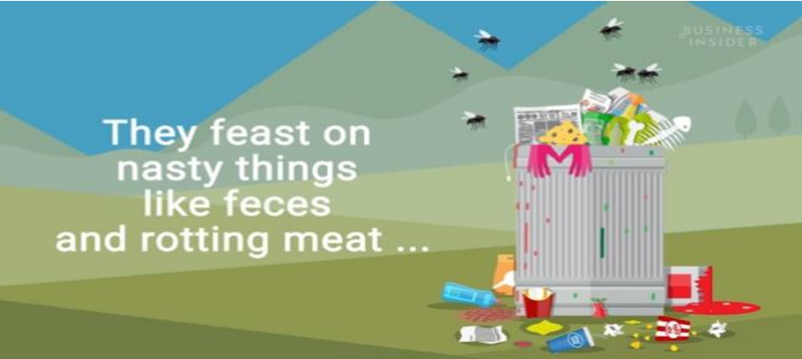
A housefly may sit on the garbage and animal excreta and the pathogens stick to their body. When they sit on uncovered food, these pathogens get transferred to the food. When someone eats this contaminated food, he or she may fall sick. To avoid this, we must keep the food covered.
Name the carriers of:
Malaria
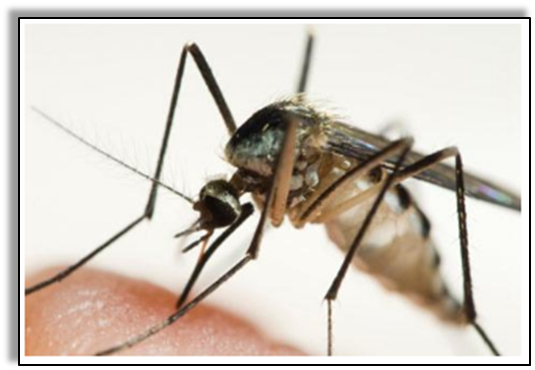
Female Anopheles mosquito (carries the parasite of malaria called Plasmodium)
Dengue
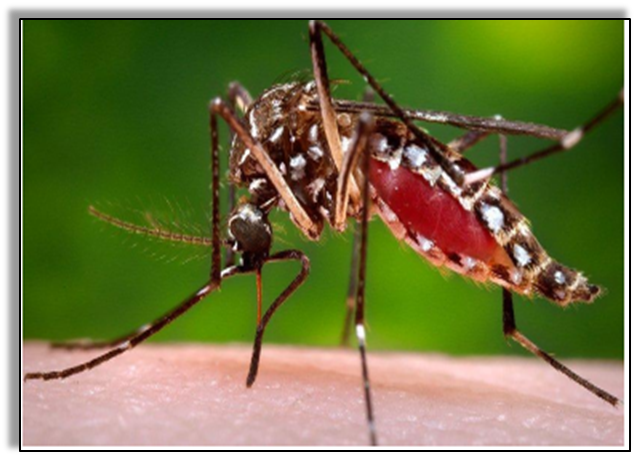
Female Aedes mosquito (carries the dengue virus called Flavivirus)
Common Diseases and their Modes of Transmission
How do prevent diseases that spread through air or contact?
To prevent diseases that spread through the air, keep the patient in complete isolation and keep his or her personal belongings away from others. Vaccination at a suitable age can prevent the onset of tuberculosis, chickenpox, polio, and measles.
How to prevent diseases that spread through water or food?
To prevent the spread of polio, cholera, typhoid and hepatitis A, vaccination is effective. One should also maintain personal hygiene and good sanitary habits and drink boiled drinking water. One should also eat properly cooked food to avoid diseases like cholera.
How to prevent diseases that spread through mosquitoes?
We can stop the spreading of diseases caused by mosquitoes (such as malaria and dengue) by not allowing the mosquitoes to breed. We should keep our surroundings clean and dry, and not let water collect anywhere - in coolers, tires, and flower pots etc. We should also spray insecticides and use mosquito repellents and mosquito nets to protect ourselves from mosquito bites.
Common Diseases and the Microorganisms that cause them
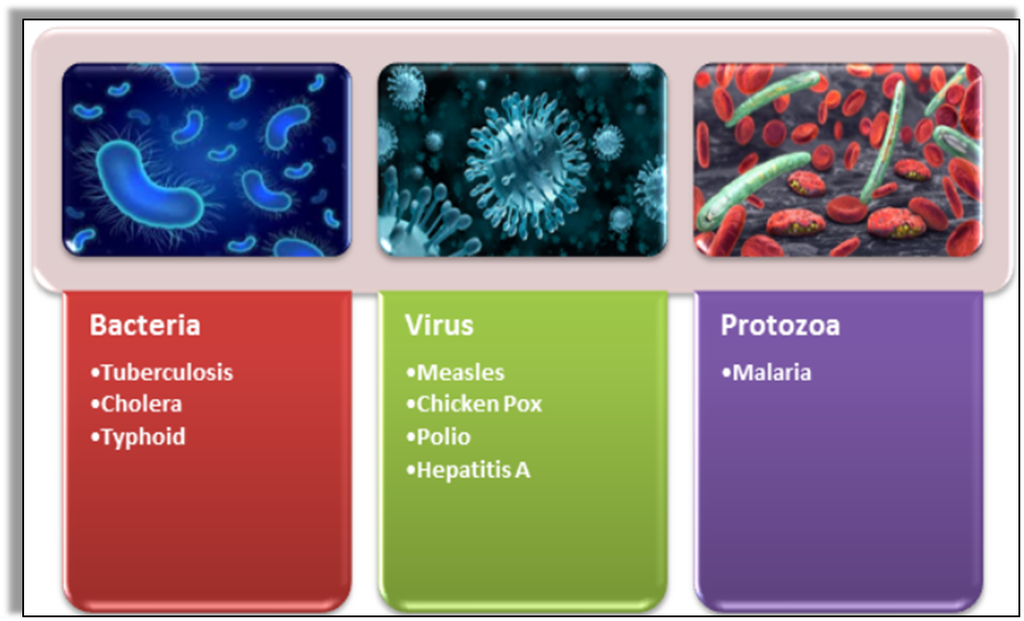
Diseases Caused by Microorganisms in Animals

Anthrax: A dangerous disease that affects humans and cattle is caused by a bacterium called Bacillus Anthracis.
Foot and mouth disease in Cattle: It is caused by a virus called the Foot-and-mouth-disease Virus (FMDV) of Picornavirus.
Diseases Caused by Microorganisms in Plants
Microorganisms can cause diseases in plants and reduce crop yield. Some of the plants in which they cause diseases are:
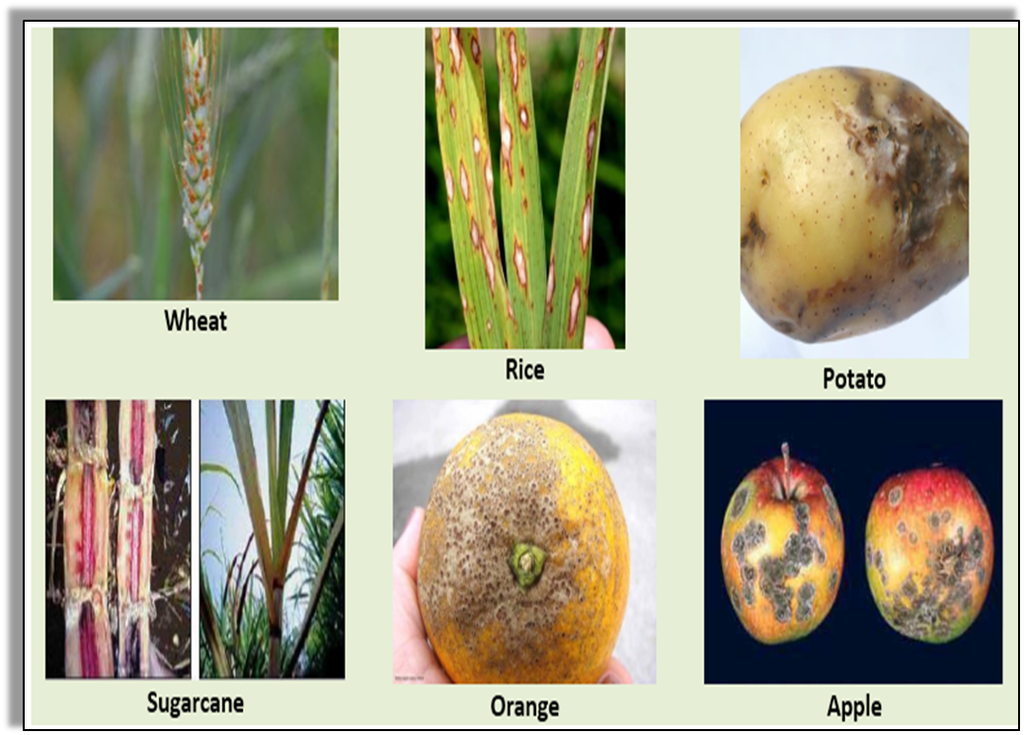
The plants can be protected by using chemicals that kill these microbes.
Common Diseases in Plants caused by Microbes
Citrus Canker is caused by Bacteria and spreads through Air.
Rust of Wheat is caused by Fungi and spreads through Air or Seeds.
Yellow Vein Mosaic of Okra (Bhindi) is caused by viruses and spreads through Insects.
Food Preservation
- Books Name
- Class-8 Science Book
- Publication
- PathSet Publications
- Course
- CBSE Class 8
- Subject
- Science
Why do we need to Preserve Food?
We need to preserve food because microorganisms that grow on food can sometimes produce toxic substances which are poisonous to us. If we consume this spoilt food, we can become seriously ill or die. Hence, we need to preserve food from being spoilt.
Food Preservation: -
Preservation began as a necessity when ancient people searched for methods to preserve their crops for prolonged periods of time. Most food is destroyed in storage by spoilage caused by living organisms such as moulds, bacteria, and yeast. Preservation is an attempt to create an environment that is inhospitable to these microorganisms.
Ways of preservation of Food: -
Drying, Pickling and Freezing are some of the methods of preservation being followed by generations all across the world.
By using ancient methods:
- In frozen climates, ancient people froze seals, whales, and fish meat under the ice. In tropical climates, they dried foods under the sun.
- India’s Achaar, Korea’s,’ Kimchi’ a popular pickled cabbage dish, Preserved Lemons in Middle Eastern Cuisine, Scandanavians’ Pickled Herrings, USA’s Pickled Cucumbers, Mexico’s Pickled Carrots, are some of the examples of Pickling.
- Walk through any grocery store you will find dried, pickled, and canned food like jalapenos, beans, olives, canned tuna, sun-dried tomatoes and dried herbs like Kasuri methi, oregano, basil, sage leaves etc.
By using chemical preservatives:
Chemicals called preservatives may be used to prevent the growth of microbes in food.
- They can prevent the growth of microbes.
- Dry salt is used to preserve meat, fish, raw mangoes, tamarind, and amla.
- They create an environment unviable for the microbes.
- Sugar reduces moisture content. Bacteria cannot grow in dry conditions. (This is used to preserve jams, jellies and fruit juice).
- Oil and vinegar contain a chemical that prevents the growth of bacteria. (This is used to preserve pickles, vegetables, fruits, fish, and meat)
- Sodium benzoate and sodium metabisulphite are chemical preservatives used to retard bacterial growth. They are used in jams and squashes.
Pasteurization: -
Pasteurization is the process of heating the milk to a high temperature followed by sudden cooling, this prevents the growth of bacteria.
- This process is called Pasteurization after Louis Pasteur-the scientist who discovered it.
- Milk is heated to 700 C for 15-30 seconds and then suddenly cooled.
Food Preservation:-
Food preservation is a process by which edible items such as fruits and vegetables are prevented from getting spoilt. The nutritive value, flavor and color of the foods preserved remain intact. This is done to increase the life of the food product and enable its storage and supply.
What principles is food preservation based on?
The main aim of food preservation is to prevent the food that is being preserved from decay by microorganisms.
The principles it works on are:
- Preventing microorganisms in the food that is being preserved i.e maintaining asepsis.
- Removal of microorganisms
- Preventing or hindering the growth of microorganisms by various methods such as low temperatures, drying, use of chemicals, etc.
- Killing the microorganisms by various methods such as heating and radiation.
Some food substances can self-decompose due to the enzymes that are present in them. In these cases, the enzymes are deactivated at the time of food preservation. Some foods are also susceptible to insects or animals and so the utilization of appropriate chemicals to kill them and prevent them from destroying the food.
Let’s now look at the methods that are used for food preservation
Food preservation methods are broadly divided into three:
1. Biological
2. Physical
3. Chemical
The commonly used methods of food preservation fall into one of the above categories. The main purpose of all these methods is to either prevent or retard spoilage of food items.
- Filtration - This is done for liquids such as juices. The process applies pressure while the liquid is passed through a very fine sieve. This results in the liquid passing through while the microbes cannot and thus the liquid obtained is sterile.
- Heat treatments -There are different kinds of heat treatments that can be done such as boiling at 100 degrees Celsius, boiling above 100 degrees Celsius(sterilization), or pasteurization (as done in the case of milk).
- Low- Temperature Treatments - The most commonly used method even in households- using a refrigerator. The refrigerator maintains a low temperature such that it slows down the growth of microbes and keeps food fresh for longer. Freezing is another low-temperature method used to preserve food where the temperature is maintained at -18 degrees Celsius.
- Using Chemicals or Preservatives - These are substances that are added to foods to prevent or slow down their spoilage. The preservatives that are added, need to fulfill certain criteria before they are deemed fit to be added to foods. The few properties of preservatives are – they should be able to inhibit a wide range of microbes, should be safe for human consumption, should not affect the taste, flavor, color, or properties of the food being preserved, should not activate any other change in the food being preserved. Commonly used preservatives are sulfites, sorbic acids, sodium nitrate, and benzoic acid.
- Acids - Citric acid and Acetic acid are commonly organic acids that are used to preserve food substances such as pickles, sauces chutneys, and vegetables. Being acidic, they inhibit the growth of the micro-organisms and thus are effective food preservatives.
- Drying - Many foods such as chips, papad, vegetables like methi or ginger are dried or dehydrated and preserved. By dehydrating, the moisture inside these substances is removed and thus micro-organisms are unable to thrive on them, thus, preserving them.
- Radiation - This method of preservation is used commonly for increasing the shelf life of meat, seafood and poultry. Irradiating these food substances helps to kill any pathogens and microbes that are present in them and prevent the growth of others. Humans have always tried and preserved their food items and other perishable items. The methods have either changed or evolved, but the purpose remains the same. Look around and observe how many of these methods you have seen at home or around you.
Common Methods of Preserving food are:
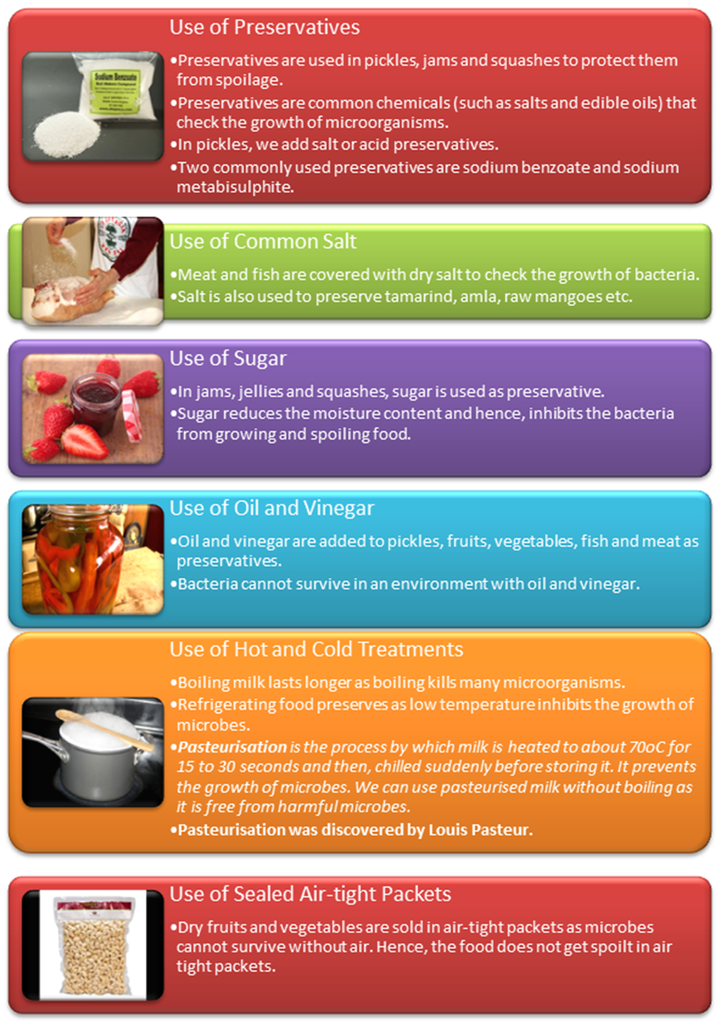
Nitrogen Fixation
- Books Name
- Class-8 Science Book
- Publication
- PathSet Publications
- Course
- CBSE Class 8
- Subject
- Science
Nitrogen Fixation
Nitrogen fixation is the process by which elemental nitrogen is converted into other nitrogen compounds which are useful for chemical processes. Nitrogen is fixed in two ways: one during lightning and by nitrogen-fixing bacteria, and blue-green algae.
Rhizobium bacteria: -
Rhizobium bacteria living in the root nodules of legume plants fix nitrogen from the atmosphere. Microorganisms in the soil convert atmospheric nitrogen into ammonium compounds, thereby enabling the survival of plants and animals.
What is the mechanism of each of these steps?
This is the first step of the nitrogen cycle. This step is characterized by the conversion of atmospheric N2 into ammonia (NH3). Bacteria like Azotobacter and Rhizobium have a major role in this process. They are harbored in the roots of the leguminous plants and help convert inert nitrogen to ammonia. Nitrogen fixation can occur in any of the following ways: atmospheric fixation (involves lightening), industrial fixation (manufacturing ammonia under high temperature and pressure conditions)
Assimilation
Once the nitrogen has been fixed in the soil, plants can absorb nitrogen through their roots. This process of absorption is known as assimilation.
Ammonification
This is another process by which ammonia can be generated. Organic remains of plants and animals are broken down in the soil by some bacteria to release ammonia into the soil. These dead and waste matters are used by these microorganisms as food and they release ammonia into the soil.
Nitrification
This occurs in two steps. The first step is in which NH3/NH$+ is converted to NO3- (nitrates). The bacteria Nitrosomonas and Nitro coccus present in the soil convert NH3 to NO2-, and another bacterium, Nitrobacter converts NO2- to NO3-. These bacteria gain energy through these conversions.
Denitrification
Is the reverse of nitrification that occurs in the deep layers of soil where the bacteria convert NO3- is converted into N2 and other gaseous compounds like NO2. This occurs because in deep layers of soil, oxygen is not available and the soil bacteria use these nitrogen compounds instead of oxygen.
What is the importance of the nitrogen cycle?
- As we all know by now, the nitrogen cycle helps bring in the inert nitrogen from the air into the biochemical process in plants and then to animals.
- Plants need nitrogen to synthesize chlorophyll and so the nitrogen cycle is absolutely essential for them.
- During the process of ammonification, the bacteria help degrade decomposing animal and plant matter. This helps in naturally cleaning up the environment.
- Due to the nitrogen cycle, nitrates and nitrites are released into the soil which helps in enriching the soil with nutrients needed for cultivation.
- As plants use nitrogen for their biochemical processes, animals obtain nitrogen and nitrogen compounds from plants. Nitrogen is needed as it is an integral part of the cell composition
Nitrogen cycle
- Books Name
- Class-8 Science Book
- Publication
- PathSet Publications
- Course
- CBSE Class 8
- Subject
- Science
Nitrogen Cycle
Nitrogen is cycled naturally by living organisms through the ‘nitrogen cycle’. It is one of the crucial natural processes to sustain living organisms. When plants and animals die, bacteria and fungi present in the soil convert the nitrogenous wastes into nitrogenous compounds to be used by plants again. Certain other bacteria convert some part of them to nitrogen gas which goes back into the atmosphere. As a result, the percentage of nitrogen in the atmosphere remains more or less constant.
Nitrogen constitutes 78% of our atmosphere. In living organisms, it is found in:
- Proteins,
- Nucleic Acids,
- Chlorophyll, and
- Vitamins.
Atmospheric nitrogen cannot be used directly by plants and animals. It gets fixed by either lightning or natural nitrogen fixers.
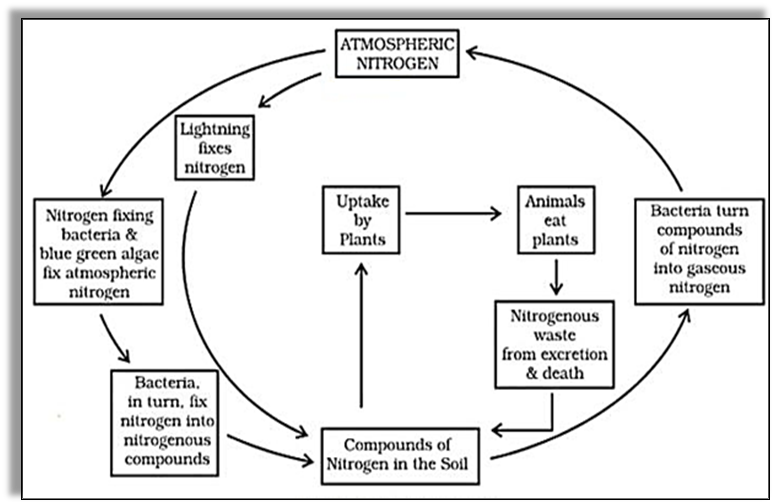
Why Nitrogen Cycle?
We are generally under the impression that we only need oxygen to live. Well, you couldn’t be more wrong! There is a laundry list of elements that animals need for survival. One such element is Nitrogen but we can’t just get nitrogen from the air. It needs to be converted to nitrates, via a process called the nitrogen cycle. So let us learn more about this fascinating concept. The air we breathe contains 78% nitrogen, 21% oxygen and the remaining are other trace gases. The nitrogen component of air is inert. So this means plants and animals cannot use it directly. To be able to use nitrogen, plants convert atmospheric nitrogen to nitrates, nitrites and ammonia compounds by a process called the nitrogen cycle. Animals derive their nitrogen requirements from plants.
What are the steps involved in the nitrogen cycle?
The nitrogen cycle consists of four main steps namely:
- Nitrogen Fixation
- Ammonification/ Decay
- Nitrification
- De-nitrification
It is important to note that microorganisms play an important role in each of these steps.
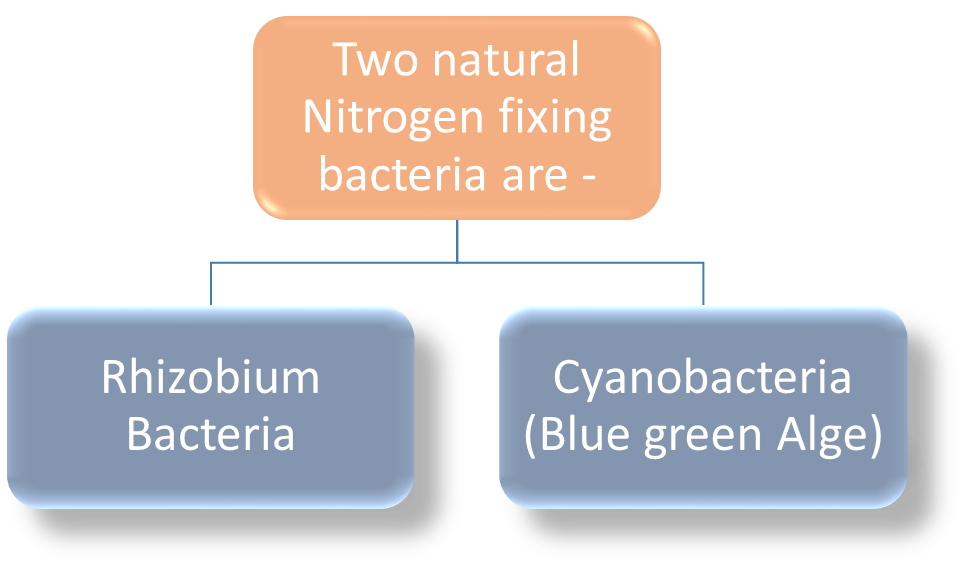
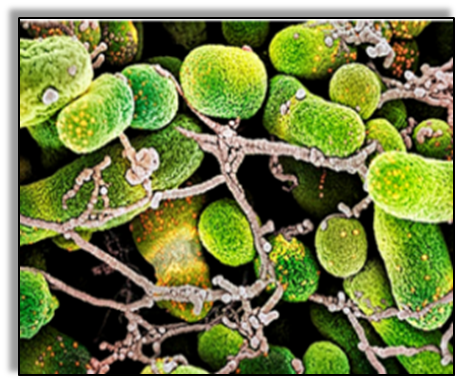
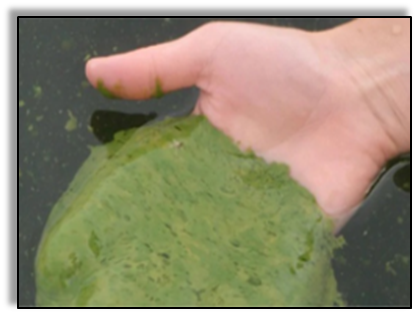
Nitrogen Cycle

A step-by-step explanation of Nitrogen Cycle
- Nitrogen Fixation: Atmospheric nitrogen is converted by lightning or certain bacteria like Rhizobium, Azotobacter and blue-green algae (present in the soil) into compounds usable by plants.
- Nitrification: Ammonia conversion into nitrites by Nitrosomonas and further conversion of nitrites into nitrates by Nitrobacter. Plants take up nitrogen in form of ammonia or nitrates.
- Assimilation: Roots of plants absorb these nitrogenous compounds from soils and plants use them to synthesize proteins and other compounds. Animals feeding on plants get these proteins and nitrogen compounds.
- Ammonification: When plants and animals die, bacteria and fungi present in the soil convert the nitrogenous wastes into compounds that can be used by plants again.
- Denitrification: Nitrates can be converted into nitrogen gas which is released back into the atmosphere by certain bacteria. Eg. Pseudomonas.
Hence, atmospheric nitrogen remains constant.
Here’s a video for you: https://youtu.be/4lWcf_6wKy8
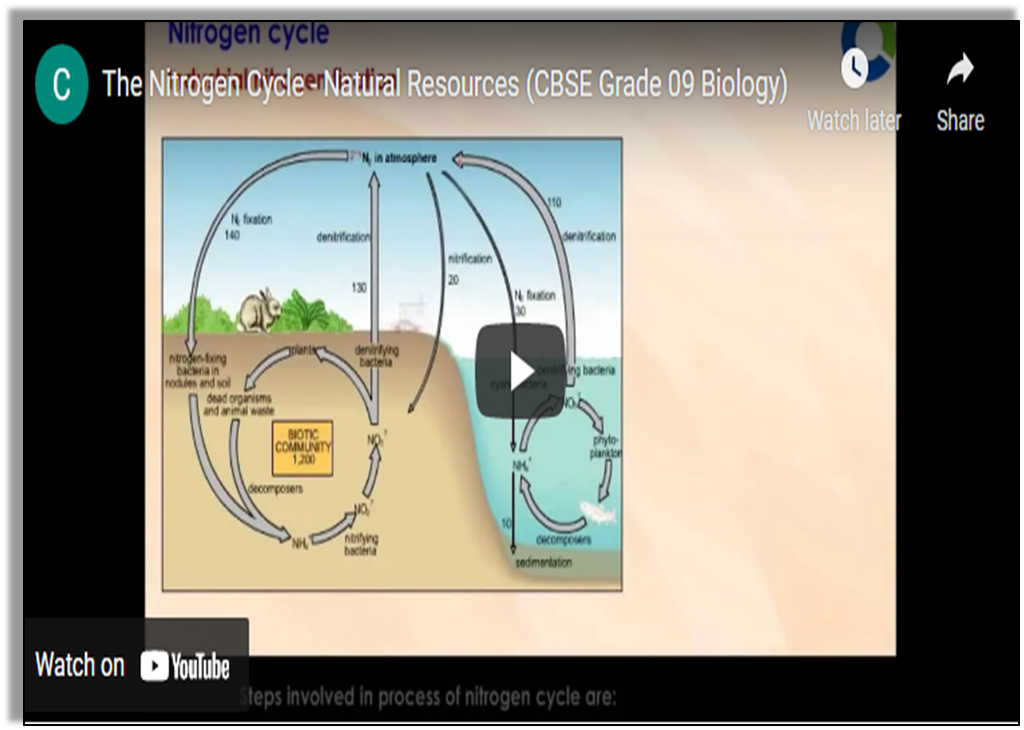

 PathSet Publications
PathSet Publications
